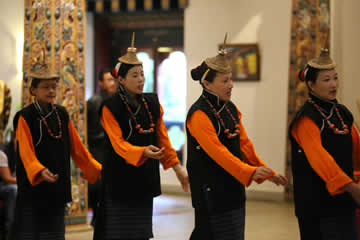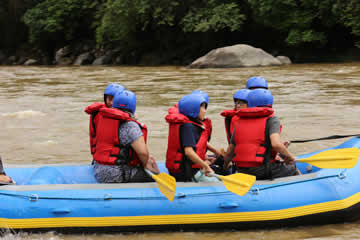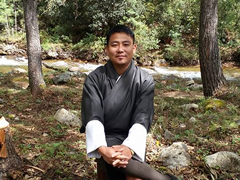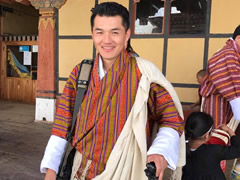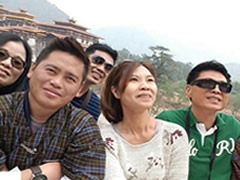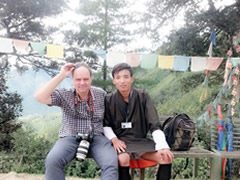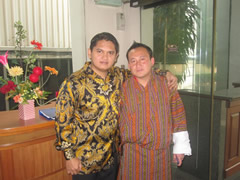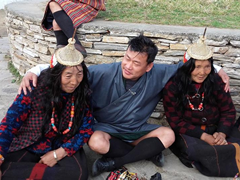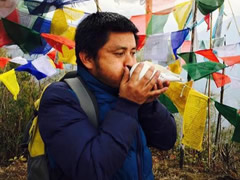Day 1: Samdrup Jongkhar
Our representatives from Zoid Jin Tours will receive you from Guwahati airport, India and will make a drive of 2 hours to Samdrup Jongkhar, Bhutan. Explore Samdrup Jongkhar Town. As a border town, Samdrup Jongkhar is often used as the entry point for merchants and tourists entering Eastern Bhutan overland.
A little way outside the town you can find the Mithun Breeding Farm. Mithuns are widely considered to be the best breed of cattle in Bhutan and this farm supplies farmers from the six eastern districts with this magnificent animal.
Overnight at Samdrup Jongkhar
Day 2: Pemagatshel
Pema Gatshel also known as Khedung is a well known district inhabited with Tshanglas, known for its religious involvement, traditions, festivals and folk music.The name Pemagatshel translates to “Lotus Garden of Happiness”. The celebration of Tshechu has started in this region from the early 1980’s with the construction of Dzong.
The main crop grown in the region is Maize (Corn) but Potatoes, Oranges, Bananas and other fruits are also cultivated. ‘Slash and Burn Agriculture’ (Tseri) was once the dominant agricultural practice in the district but nowadays most farmers have orchards and sell much of their crop.
The first democratically elected Prime Minister of Bhutan namely Jigme Yoezer Thinley ( 2008 - 2013 ) was from Pemagatshel District.
You will get to visit : Yongla Goemba is one of the oldest and holiest shrines in Eastern Bhutan. One of the more interesting historical facts about the temple is that during the Duar War the Trongsa Poenlop (Feudal Lord) Jigme Namgyel, father of the First King Ugyen Wangchuck, used it as a base of operations in order to launch raids upon the British troops.
Thonpu Zangthopelri Hike : You will be going to make a drive of 3 to 4 hours from Pemagatshel Dzong and then will make a hike to Zangthopelri after visiting Tsebar nyangrai Stupa. Zangtho Pelri means the abode of Guru Rinpoche. The temple was self funded by Lama Sangay and his decedent Lama Sonam Tashi. From the top you will get a very clear view of the whole Pemagatshel region.
Overnight at Pemagatshel
Day 3: Trashigang
After breakfast our journey will start from Pemagatshel District to Trashigang (also spelt Tashigang). Trashigang town is at about 1070m above the sea level. It is the center and the district capital of Trashigang Dzongkhag, the largest district in the country.
Overnight at Trashigang
Day 4: Trashiyangtse Excursion
Right after your breakfast you will go to visit the famous Chorten Kora which was built in 1740; it starkly resembles the Bodhisattva temple of Nepal. The temple has beside it a black rock which has the imprint of Guru Padmasambhava’s thumb print, hat and his body, which is a sight you must visit. Pilgrims from all corners of Bhutan and from the Indian state of Arnachula Pradesh come to attend the famous annual Tsechu/festival where everyone circumambulate the Chorten all night long.
In the evening drive to Trashigang, the biggest district in Bhutan.
Day 5: Mongar
After breakfast visit:
Trashigang Dzong or ‘The Fortress of the Auspicious Hill’ was built in 1659, to defend against Tibetan invasions. According to legend it is said that upon seeing the Dzong, invading Tibetan armies remarked that the Dzong was “not on the ground. It is a Sky Dzong” before retreating. It has been the political stronghold of Eastern Bhutan for over 300 years.
Then move to Mongar District. After lunch visit Mongar Dzong.
Mongar is the fastest-developing dzongkhag in eastern Bhutan. A regional hospital has been constructed and the region is bustling with many economic activities. Mongar is noted for its lemon grass, a plant that can be used to produce an essential oil. It also has a hydroelectric power-plant on the Kuri Chhu river.
Overnight at Mongar
Day 6: Lhuentse Excursion / Home Stay
Today day excursion to Lhuentse, it is one of the most isolated districts in Bhutan. The landscape is spectacular, with stark cliffs towering above river gorges and dense coniferous forests. The region is famous for its weavers, and their distinctive textiles are generally considered to be the best in the country. The Kurtoe region of Lhuentse is the ancestral home of the monarchy.
We will also visit Takila to see the tallest statue of Guru Nangsey Zilneon. The 157 feet Guru Nangsey Zilneon statue is the one of the tallest statue in the world. Seated on a 38 feet lotus located on a hill in Takila overlooking Tangmachu village in Menbi gewog, the construction took more than seven years. Located on a 27-acre area in Tangmachu, besides being a pilgrimage site, the site would also serve as a place where people can come for meditation and retreat.
You can also visit Kushitara Weaving Centres in Lhentse and if you want to buy souvernirs then these the cheapest place. In the evening return back to Mongar.
overnight at a hotel in Mongar / Remain at Lhuentse for Home Stay


